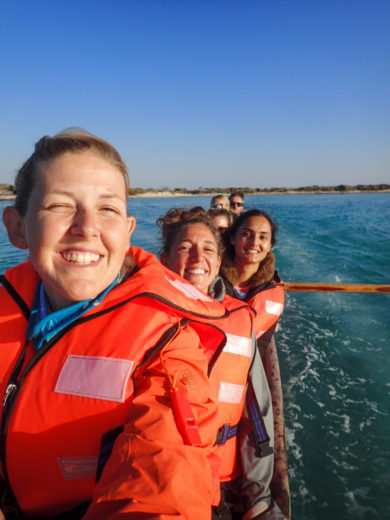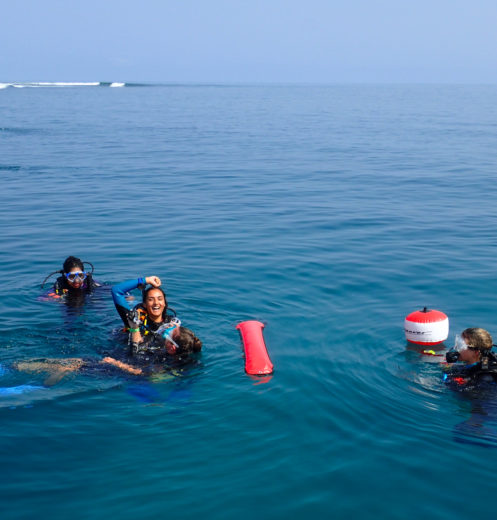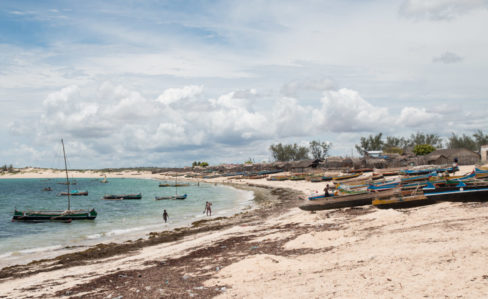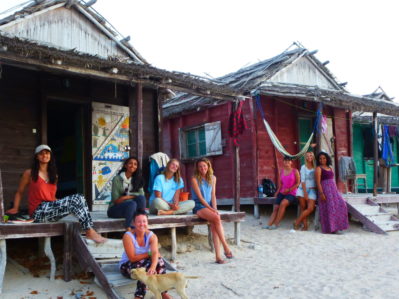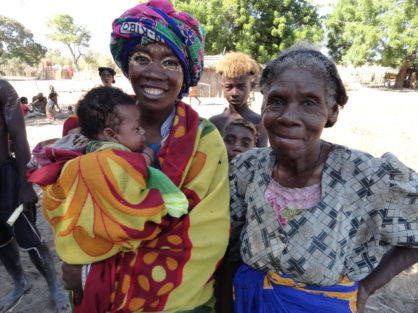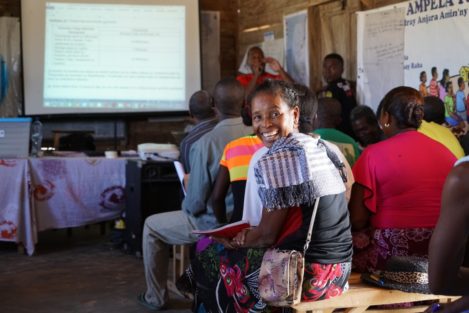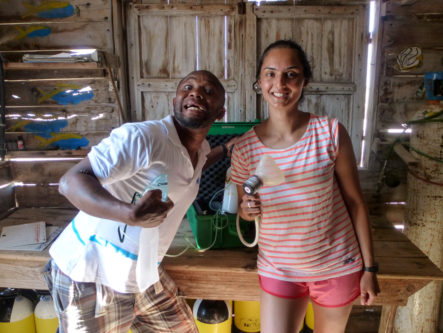“Alefa! Raiky, roa, telo!!” [Ready! One, two, three!!]
* Splash *
…and off we go! The 30th dive of our expedition on a scorching 30-degree day. All geared up with regulators in our mouths and tanks on our backs, we roll off the speedboat into the turquoise-blue sea.
After an incredible but intense month of Trauma and Emergency Medicine at Chris Hani Baragwanath Hospital in South Africa for the first part of my medical elective, I had planned a month of sun, sea and scuba diving in Madagascar with Blue Ventures (BV). What I wasn’t prepared for, however, was a deeply enriching cultural experience and a whole world of community health that I never knew existed.
From my first day in Andavadoaka, BV’s base in southwest Madagascar, the Field Scientists, Tom and Christine, and the other volunteers on site were all extremely welcoming and I immediately felt like I was part of the team. Every evening at Vao vao [news], Tom and Christine would discuss the following day’s schedule. I was initially surprised to see chock-a-block days with diving twice in the morning followed by lectures in the afternoon! I thought I’d left lectures at University, but these ones sounded intriguing: Malagasy Culture, English Lessons, Benthic, and Fish Species…
We were given a lecture about BV’s community health programme, known locally as Safidy – the Malagasy word for ‘choice’. The Safidy programme was founded over ten years ago when a doctor on a BV expedition identified the vast unmet need for a clinic in Andavadoaka. The clinic surpassed all expectation and was a booming success. One in five women of reproductive age from Andavadoaka attended the clinic on its opening day!
“The difference Safidy has made to young women has been life-changing. They choose the number of children they have, and the spacing of the births, which has led to some of them opening shops and helping in fisheries management. They can now buy clothes and food”
– Balbine
Before long, BV was training local women as community health workers (CHWs) so that the health needs identified at the clinic could be brought to other villages in the region. Today, the role of a CHW goes beyond providing family planning services in their villages: they have also been trained to offer health information to pregnant and postpartum women, manage common childhood illnesses such as respiratory infections, malaria, and diarrhea, sell water-purifying solution, facilitate small group discussions to support the uptake health-promoting practices such as handwashing with soap and exclusive breastfeeding, and encourage community engagement in marine resource management!
Learning about Safidy has been fascinating, particularly as BV uses a holistic approach known globally as PHE, which integrates community health services with marine conservation and coastal livelihood initiatives, recognising that the health of people and the environment are intrinsically intertwined. In practice this means building strong links with other Blue Ventures programmes, such as fisheries and aquaculture, so that women and men learn about local marine resources management and family planning.
Since the birth of the Safidy programme there have been encouraging results, with the proportion of sexually active women of reproductive age in the area using contraception increasing from less than 10% to over 50%! On top of that, women now make up 38% of the general assembly governing the Velondriake Locally Managed Marine Area, up from just 13% previously.
To further understand how the Safidy programme has affected people in Andavadoaka, I spoke to BV’s Community Health Technician, Balbine, who was originally trained by BV as a CHW in 2010 before joining the Safidy team in 2013. She now helps to train the CHWs, and has recently set up a small enterprise selling second-hand clothes to raise money for emergency medication for women giving birth in Andavadoaka.
When I asked about the changes she had seen since she began working with the Safidy programme, Balbine replied, “The difference Safidy has made to young women has been life-changing. They choose the number of children they have, and the spacing of the births, which has led to some of them opening shops and helping in fisheries management. They can now buy clothes and food”.
Balbine was particularly moved by the change she saw in one particular client: “A 26-year-old lady* with six children – she was worryingly thin. She started using a contraceptive injection for three months and liked it because they were easy to use and not frequently needed. They have changed her life – her health has improved significantly and she can now wash clothes and cook food, and she is not skinny anymore. She even helps her husband who works in the fishery”.

Hina and Balbine at the BV office in Andavadoaka | Photo: Hina Morjaria
I chatted with the coordinator of the community health programme, Njaka, to understand more about the programme and gauge how I could best contribute. We decided that teaching basic IT skills to some of the staff would be valuable, as well as proofreading and formatting some of their presentations. After taking these sessions, I noticed that the staff I was teaching all spoke Malagasy as their primary language, but their computers were either in French or English. Although most could speak French, and some knew English, it was still very difficult to understand and navigate a computer system in their secondary or tertiary language. Demystifying some of the IT commands and techniques was a genuinely great way to help, and I would urge any future BV volunteers to get involved with this. Don’t underestimate the value of skills that are second nature to most young people who own a laptop!
Quite apart from the community health side of things, my time with BV was an incredible learning experience. From learning how to approach an unresponsive diver at the bottom of the ocean on the Rescue Diver course, to learning the traditions of the Vezo people, to learning how different coral species feed and reproduce, it was all phenomenal!
Leaving Andavadoaka was emotional; in just 6 weeks the volunteers had grown really close, and I was going to miss the BV staff who had made my stay so enriching. It was all more than I could have ever imagined, way beyond my expectation of “sun, sea and scuba”, and I’m already planning my return.
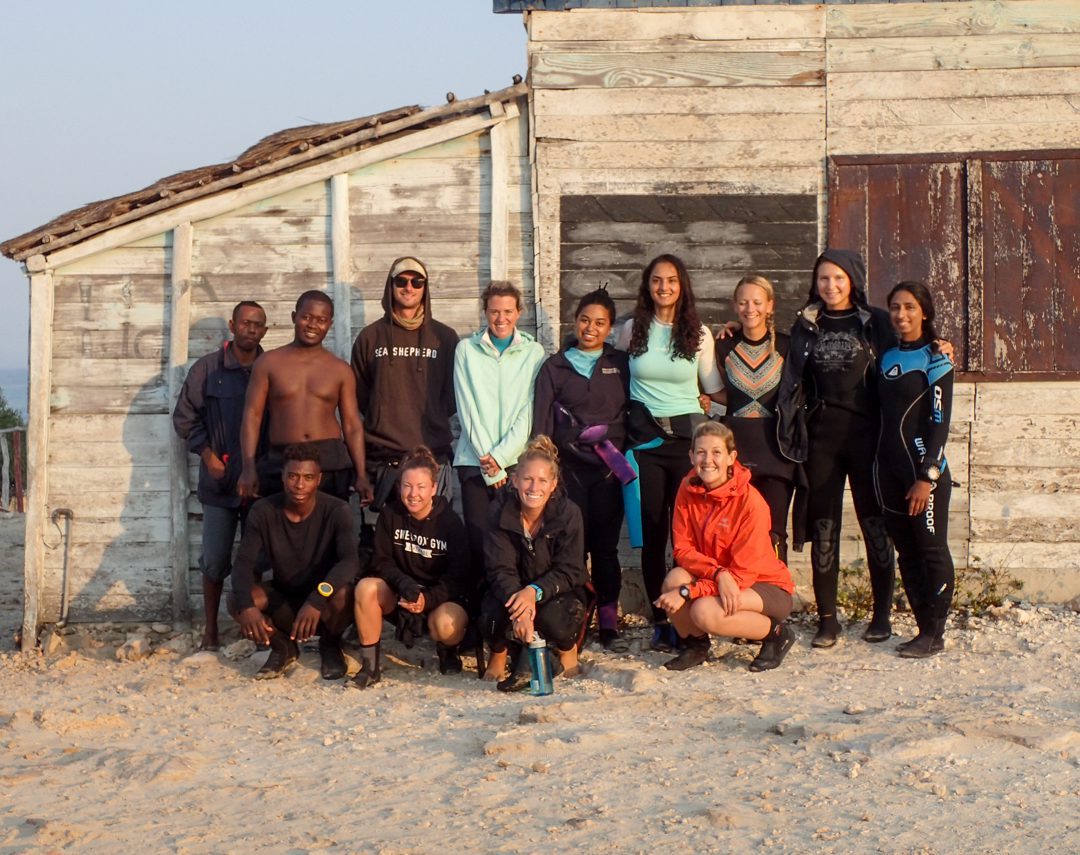
The whole expedition gang! | Photo: Hina Morjaria
Discover why Blue Ventures moved into supporting health service provision.
*All patients were kept confidential and consent was gained.


